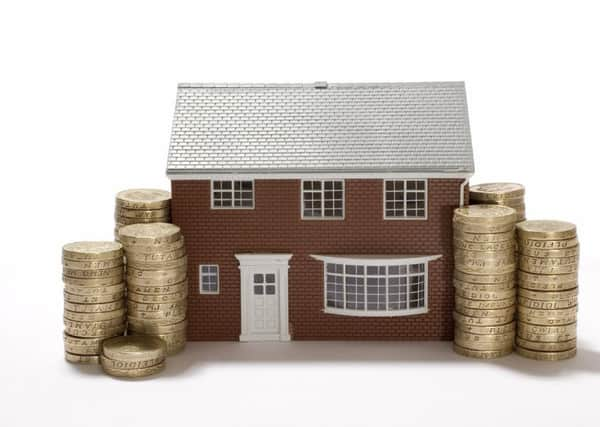Advice on how to cut your home energy bill


The biggest fuel bill of the year is about to drop on the doormat or into the “inbox”, and this year it comes amid forecasts of higher energy prices.
Many UK households face gas and electricity bill rises of up to 28 per cent as fixed price contracts come to an end. Moneysupermarket says that 77 deals are due to expire before the end of April. This could leave the average household paying £200 more a year.
Advertisement
Hide AdAdvertisement
Hide AdTo compound the issue, some big suppliers are raising prices. nPower recently revealed that it was putting up its electricity prices by 15 per cent and its gas prices by 4.8 per cent, while many other firms confirmed their electricity rates would rise by about eight per cent. It all adds up to misery for bill payers but a combination of shopping around and employing energy-saving measures can help mitigate the effects.
Here are some ideas.
*Consider switching suppliers. This is much easier than it used to be as the new supplier will organise the move for you. All you need to do is submit a meter reading and settle outstanding bills with the old company.
*Do your homework first. There are some excellent price comparison sites, including uSwitch.com. Which? Which.co.uk has customer satisfaction ratings. It is common to save between £100 and £200 a year by swapping supplier. If you are on a fixed price tariff, there may be an exit fee, though you can move penalty-free up to 49 days before an existing deal comes to an end.
*Loft insulation. If you haven’t got it, then invest in it. A quarter of a home’s heat is lost through uninsulated roof space. If your loft is easy to access and the joists are regular, then you can do this yourself. Or it can be done by someone competent in DIY or a professional installer. Try the National Insulation Association for fitters in your area. A fitter generally charges between £250 and £400. The insulation should last 40 years and the savings are considerable. According to the Energy Saving Trust, fitting loft insulation in a mid-terraced house can cut heating bills by £135 a year and by £240 a year in a detached house.
Advertisement
Hide AdAdvertisement
Hide Ad*Insulating under the floorboards on the ground floor will save you about £40 - £55 a year. Older homes are more likely to have suspended timber floors. These can be insulated by lifting the floorboards and laying mineral wool insulation supported by netting between the joists. Seal the gaps between the boards with string. Stain the string the colour of your floorboards and glue into the gaps. Top with a rug as this will keep out draughts.
*Draughts are everywhere in the average home. They are most common around windows, doors, loft hatches and around plug sockets and pipes on outside walls. Fitting an insulated letterbox flap and keyhole covers will help. You can also thermal line your curtains and put a draught excluder by the door.
*Change your lighting to energy-efficient LEDs, especially if you have halogen downlighters, which cost a fortune to run.
*Service the boiler once a year – a more efficient boiler is cheaper to run and is less likely to break down. A service costs about £80
Advertisement
Hide AdAdvertisement
Hide Ad*Fit reflective panels behind radiators, especially those fixed to an outside wall as they will reduce the heat loss through walls.
*Buy energy saving appliances and gadgets. The larger a television is the more energy it will consume, regardless of its energy rating. An A-rated 22” LCD TV typically costs £4 a year to run whereas an A-rated 60” TV costs £33.
*Ovens and hobs that have an ‘A+++’ energy rating are the most efficient of all. A new A+++ rated electric oven will consume 60 per cent less energy than a B rated oven. Many people swear by the Remoska. It originates from the Czech Republic and looks like a plug-in pan but is a very effective 400w mini oven with a heating element concealed in the lid. It uses 85 per cent less electricity than a standard oven and can be used to cook everything from a roast dinner to pizzas, ready meals, stews and cakes. It is particularly good for singles and couples. They start from £149.99 from Lakeland, Lakeland.co.uk
*For more advice visit the Energy Saving Trust website, www.energysavingtrust.org.uk